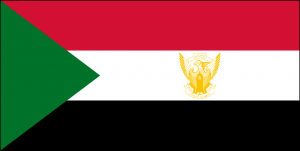Language/Sudanese-arabic/Grammar/Nouns
Hi Sudanese Arabic learners! 😊
In this lesson, we will dive into the world of nouns in Sudanese Arabic. Nouns are an important part of any language, and in this lesson, we will learn how to identify, use and form Sudanese Arabic nouns. We will also explore some interesting facts about Sudanese Arabic culture.
After mastering this lesson, these related pages might interest you: Negation, Questions & Future Tense.
Overview[edit | edit source]
In Sudanese Arabic, nouns are words that describe objects, people, places, or ideas. Nouns can be singular or plural, and they have gender in some cases. Nouns can also act as subjects, objects or indirect objects in a sentence.
For Sudanese Arabic learners, it is important to master the noun forms in order to form sentences correctly.
Gender in Nouns[edit | edit source]
In Sudanese Arabic, gender is an important aspect of nouns. Generally, nouns can be divided into two genders - masculine and feminine.
Masculine nouns usually end with the vowel "-u" or "-a" and feminine nouns usually end with the vowel "-i" or "-a".
For example:
| Sudanese Arabic | Pronunciation | English |
|---|---|---|
| مُعَلِّمْ (mu'almim) | moo-al-meem | male teacher |
| مُعَلِّمَّةْ (mu'almimma) | moo-al-mim-mah | female teacher |
As you can see, the masculine noun ends with the vowel "-u" and the feminine noun ends with the vowel "-a". This is a basic example of gender in Sudanese Arabic nouns. However, there are exceptions to this rule, so it's important to learn the gender of each noun individually.
Plural in Nouns[edit | edit source]
In Sudanese Arabic, there are different ways to form plurals of nouns. Most commonly, plurals can be formed by adding an "-een" or "-yan" to the end of the noun. However, this is not a fixed rule and there are many exceptions.
For example:
| Sudanese Arabic | Pronunciation | English |
|---|---|---|
| وَلَدْ (walad) | wah-lid | boy |
| أَوْلادْ (awlad) | aw-lad | boys |
In this example, the singular form of the noun "boy" is "walad". The plural form of the noun "boy" is "awlad". As you can see, this plural form is created by adding '-ad' to the end of the word.
Another example:
| Sudanese Arabic | Pronunciation | English |
|---|---|---|
| دَارْ (dar) | dah-r | house |
| دُورْ (door) | door | houses |
In this example, the singular form of the noun "house" is "dar". The plural form of the noun "house" is "door". As you can see, this plural form is created by adding a "-oon" to the end of the word.
To form plural nouns in Sudanese Arabic, you have to learn the different patterns that are used to form plurals. This will help you to correctly identify and use plural nouns in your sentences.
Dual in Nouns[edit | edit source]
In Sudanese Arabic, the dual form is used for two objects or people. The dual form is created by adding the word "en" after the noun's vowel ending, i.e., "-an" or "-in". This is similar to the plural form, but the "en" is added before the plural ending.
For example:
| Sudanese Arabic | Pronunciation | English |
|---|---|---|
| راجِلْ (rajil) | ra-gil | man |
| راجِلَيْنْ (rajilayn) | ra-gil-ayn | two men |
In this example, the singular form of the noun "man" is "rajil". The dual form of the noun "man" is "rajilayn". As you can see, the dual form is formed by adding "-ayn" after the vowel ending "-i".
Vocabulary[edit | edit source]
You can use the following table to learn some basic Sudanese Arabic nouns and their translations:
| Sudanese Arabic | Pronunciation | English |
|---|---|---|
| كتابْ (kitab) | kee-tab | book |
| جَدَّةْ (jaddah) | jad-dah | grandmother |
| قَميصْ (qamis) | ka-mees | shirt |
| شَمْسْ (shams) | shams | sun |
| طَعامْ (ta'am) | ta-am | food |
| بَيْتْ (bayt) | bayt | house |
| عائِلَةْ (aa'ila) | aah-ee-lah | family |
| بنتْ (bint) | bint | girl |
| وَلَدْ (walad) | wah-lid | boy |
Use these words to create sentences and practice forming nouns in context.
Dialogue[edit | edit source]
To see how nouns are used in context, here's a dialogue:
- Person 1: هَذَا كِتَابٌ جَديدٌ، هَلْ تَريدُ أَنْ تَقْرَأَهُ؟ (haza kitabun jadeed, hal tureed an taqra'ahu?) (This is a new book, do you want to read it?)
- Person 2: نَعَمْ، أُحِبُّ قِرَاءَةَ الكُتُبِ. (na'am, uhibu qiraa'ata alkutub.) (Yes, I love reading books.)
In this dialogue, you can see how the word "kitab" is used as a noun. It means "book" in English.
Culture and Interesting Facts[edit | edit source]
Sudanese Arabic is widely spoken in Sudan, which is a country in northeastern Africa. Sudan has a rich cultural heritage and is known for its diverse ethnic groups and languages. Sudanese Arabic is the most widely spoken Arabic dialect in Sudan, and it has many unique features that distinguish it from other dialects.
One interesting fact about Sudanese Arabic is that it is heavily influenced by African languages. Many words in Sudanese Arabic have their origins in African languages such as Nubian, Beja, and Fur. This gives Sudanese Arabic its unique flavor and makes it distinct from other Arabic dialects.
Sudanese Arabic culture is also known for its hospitality and generosity. Sudanese people are known for their warm welcome to visitors and their willingness to share what they have. If you visit Sudan, you will likely be treated to delicious food, traditional music, and hospitality that is hard to rival anywhere else in the world.
To improve your Sudanese Arabic Grammar, you can also use the Polyglot Club website. Find native speakers and ask them any questions!

